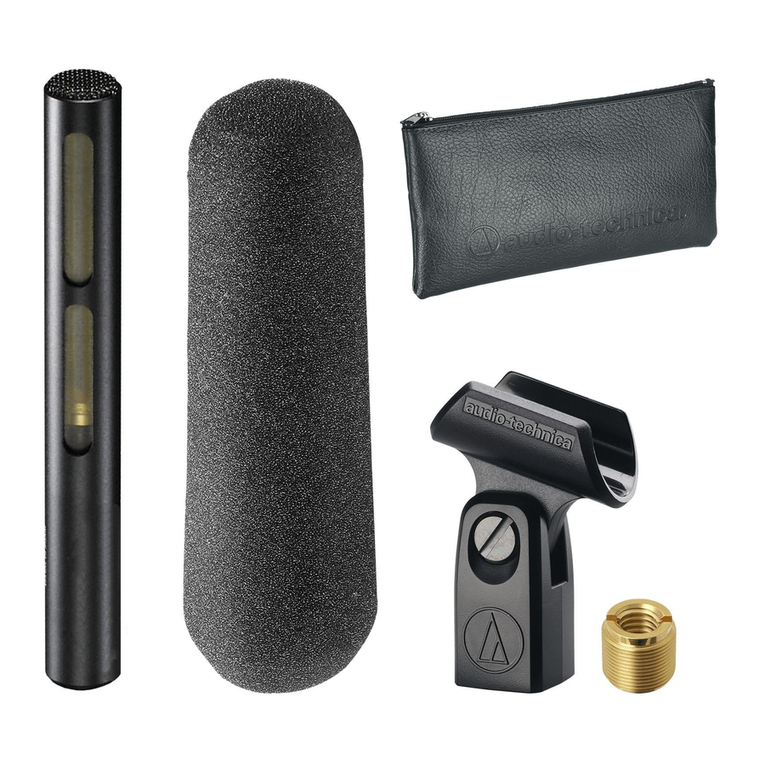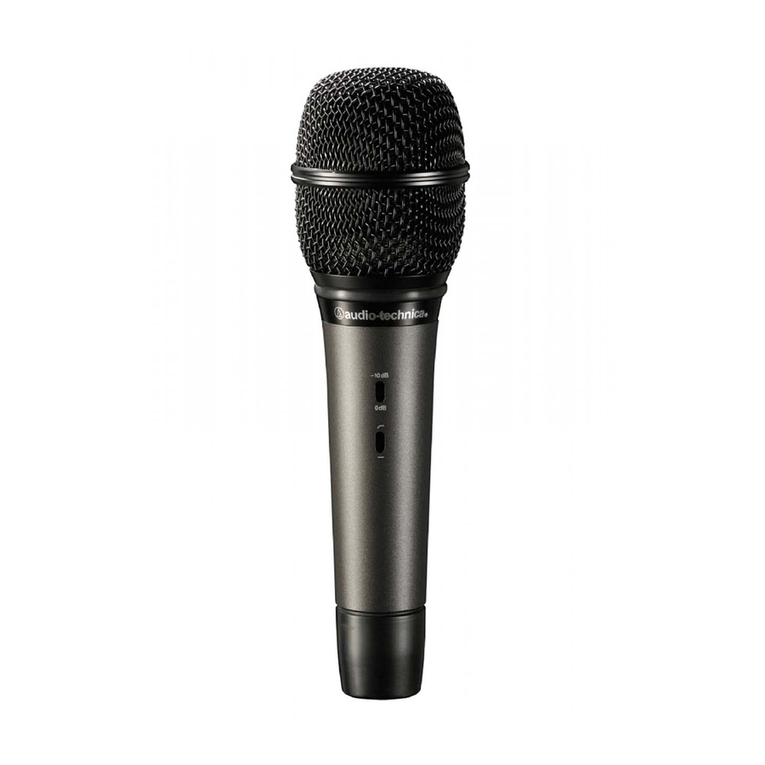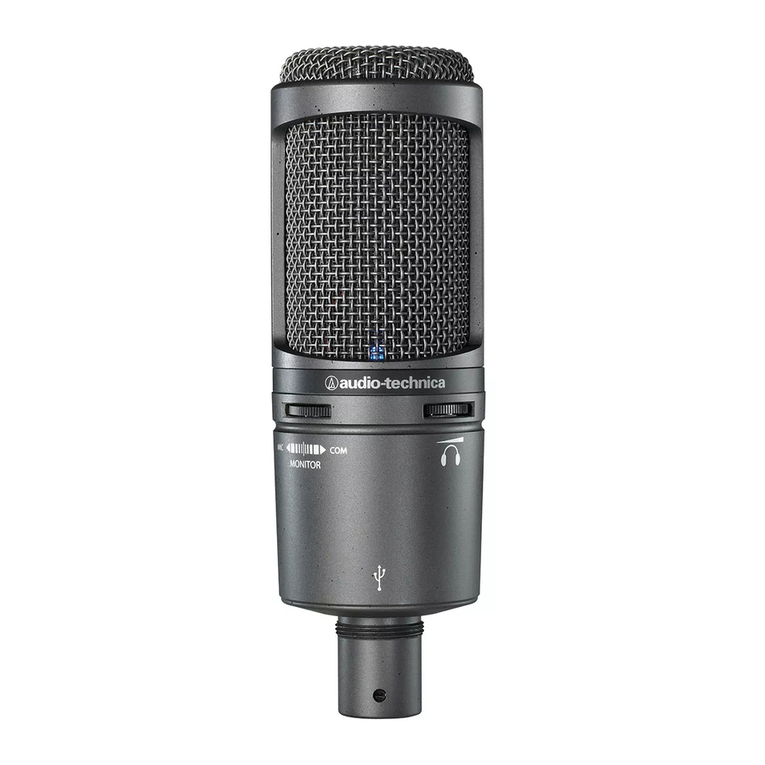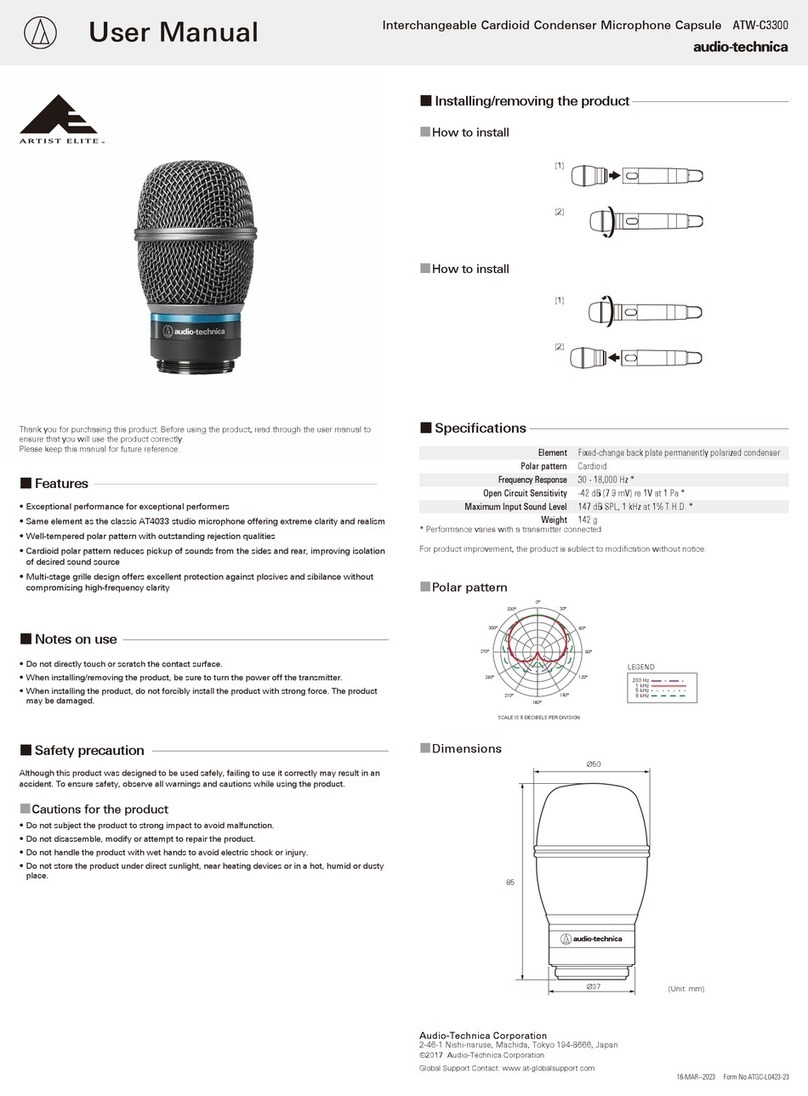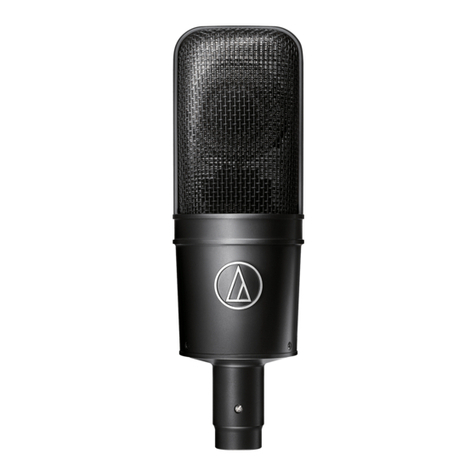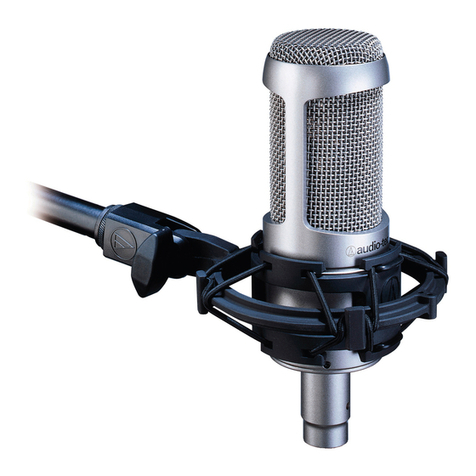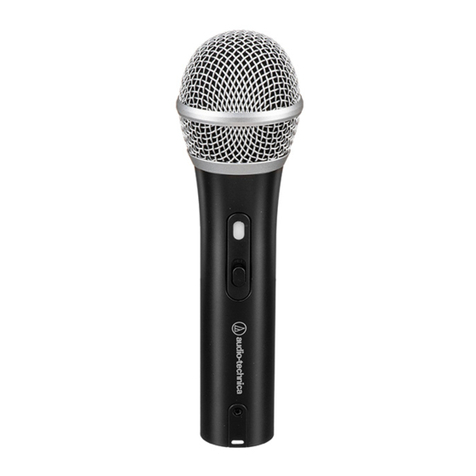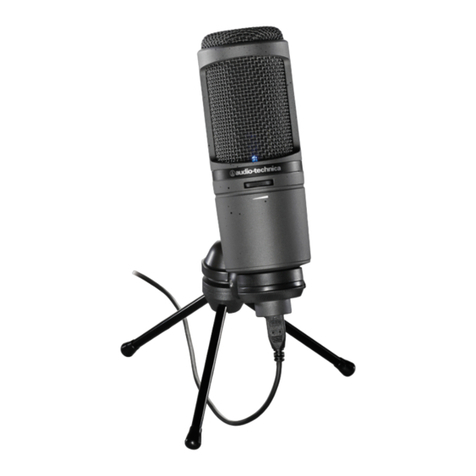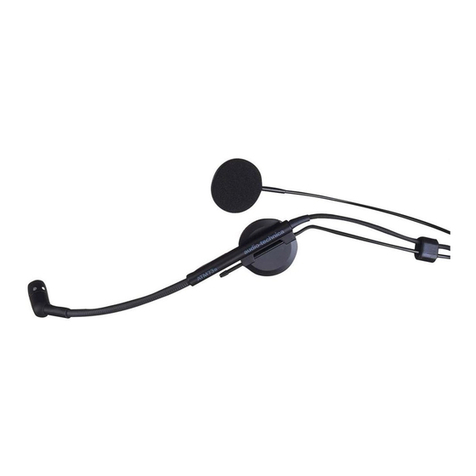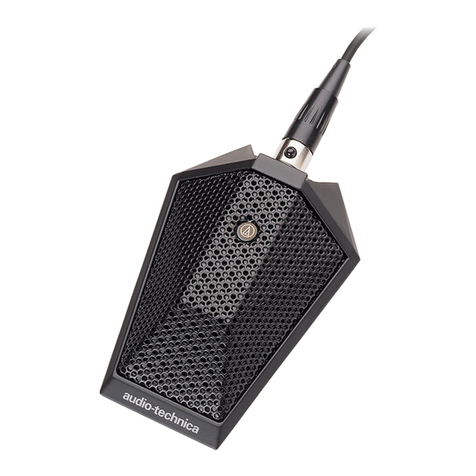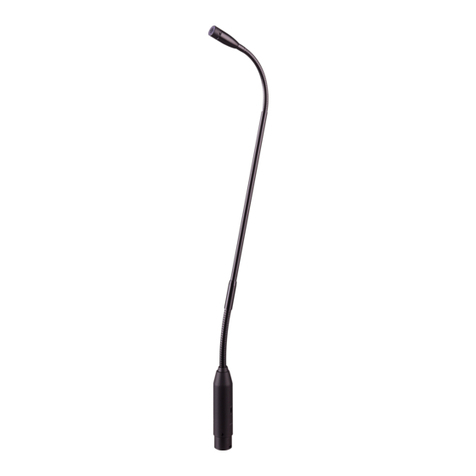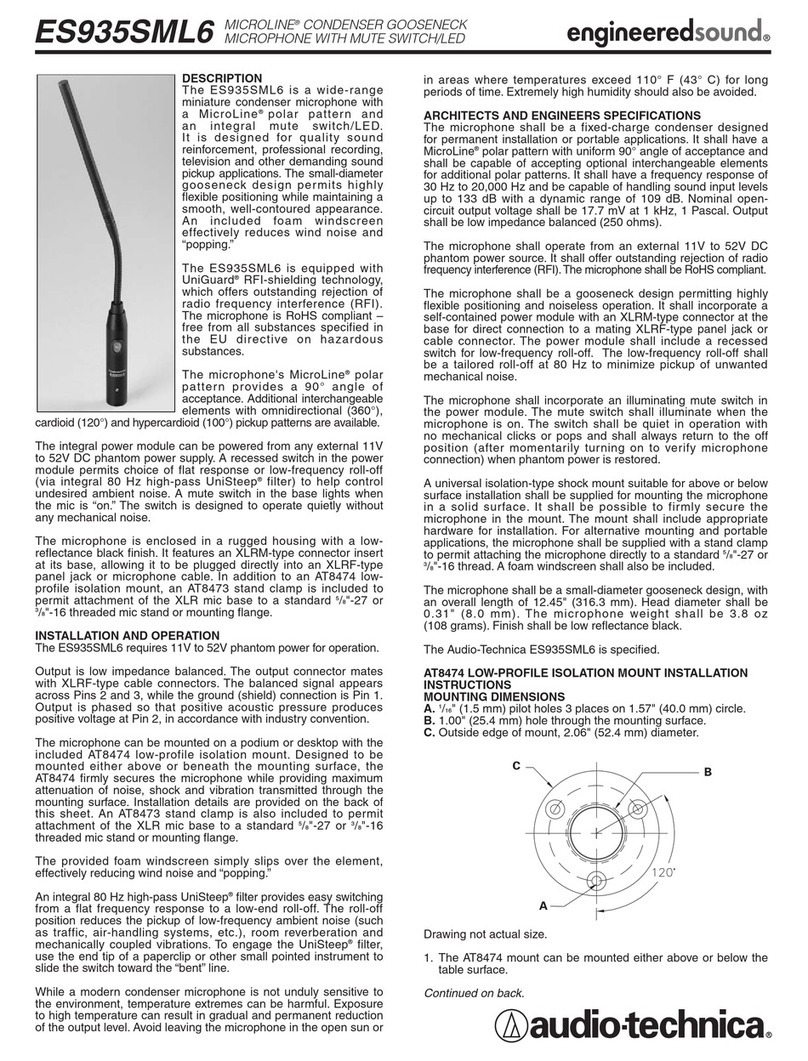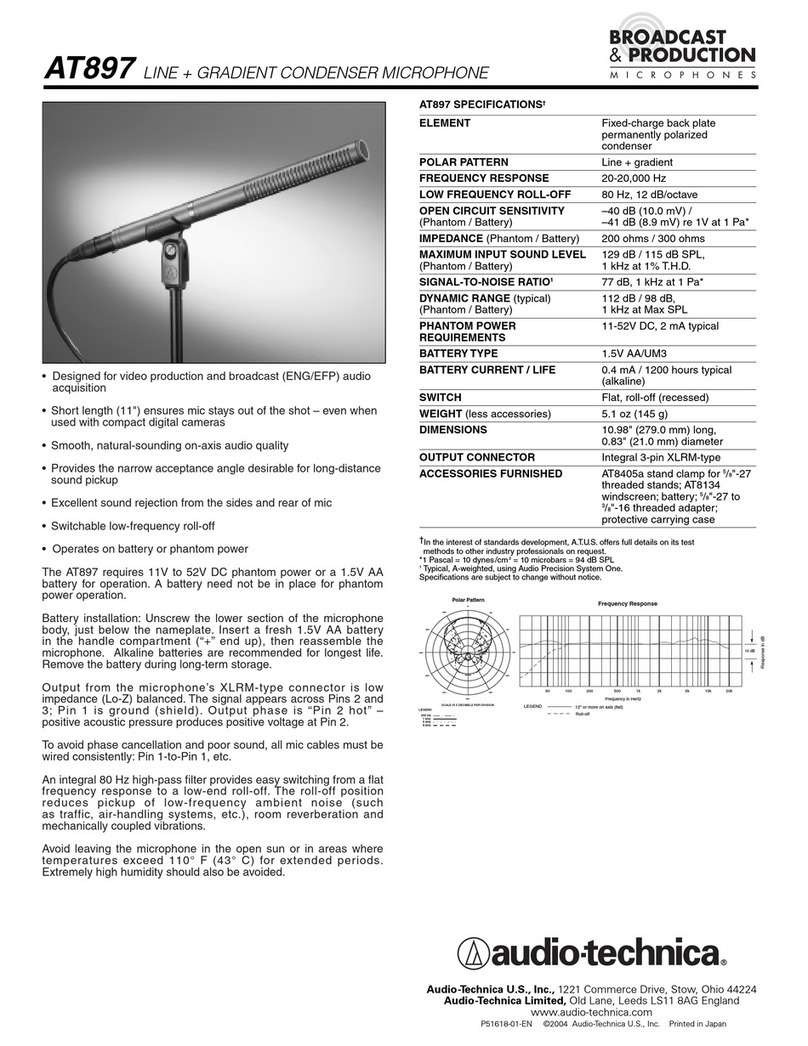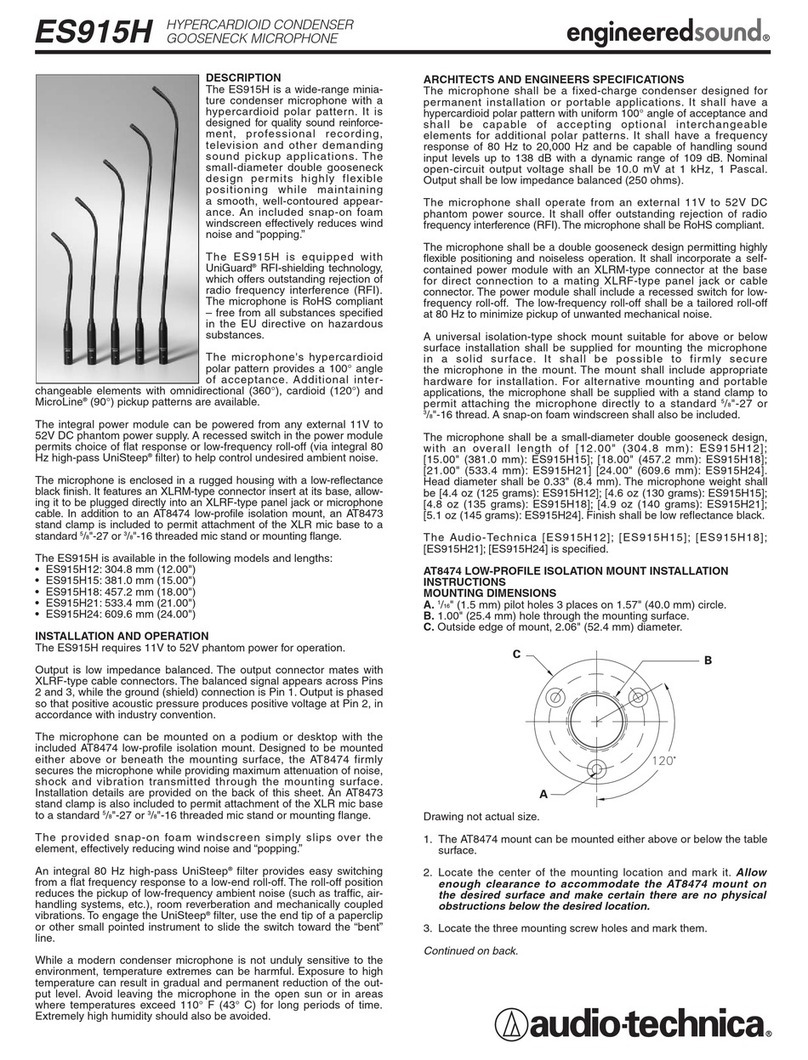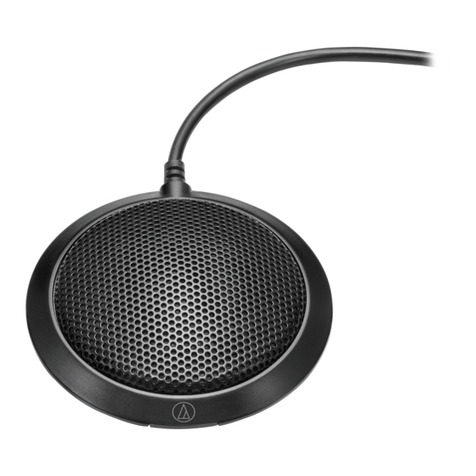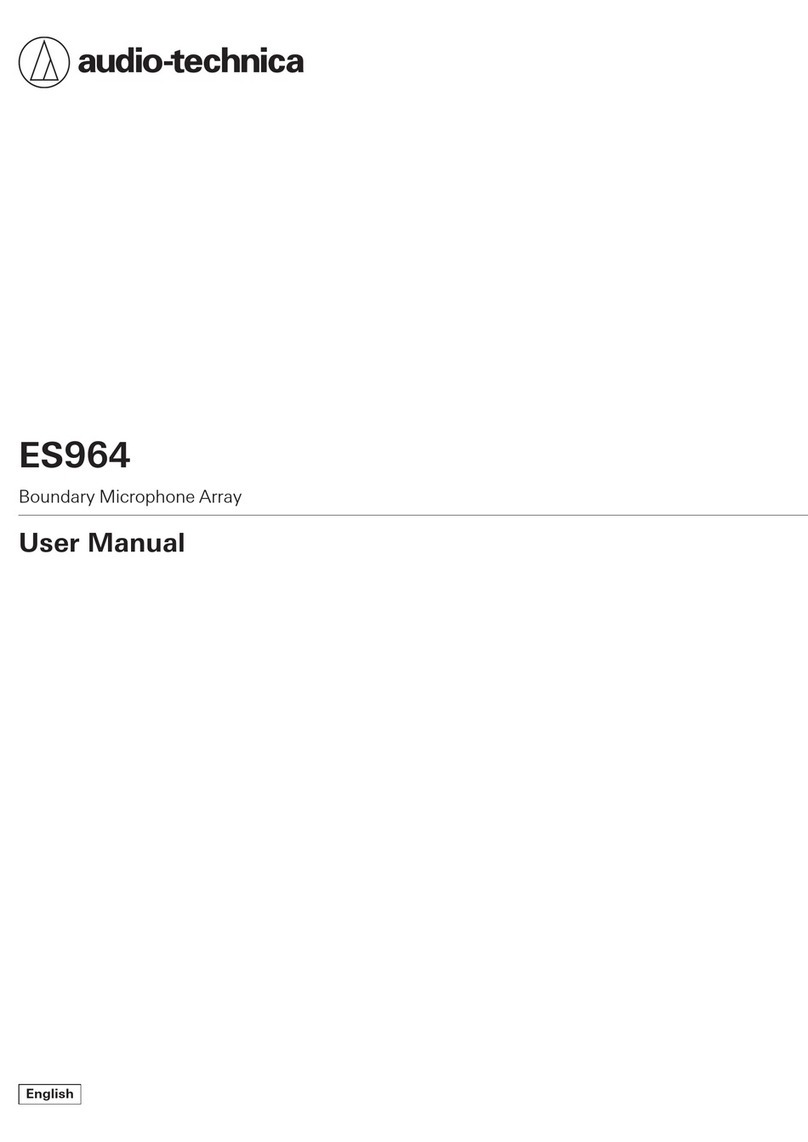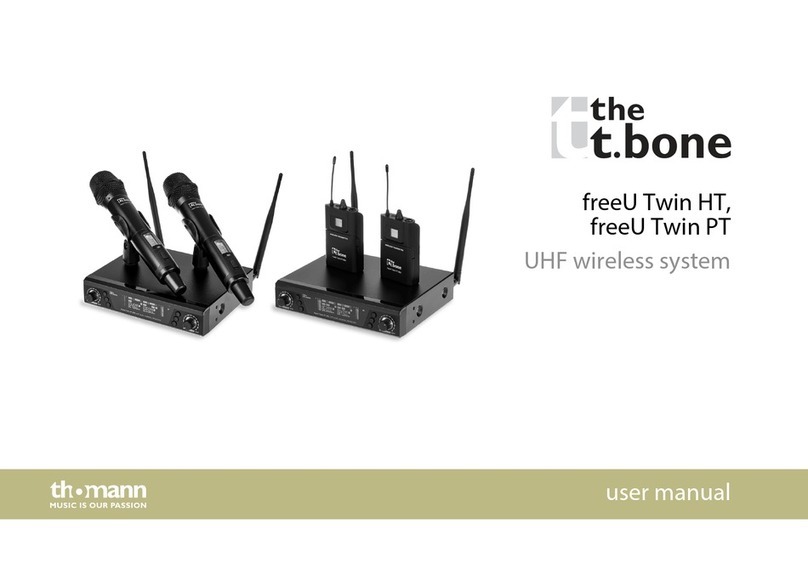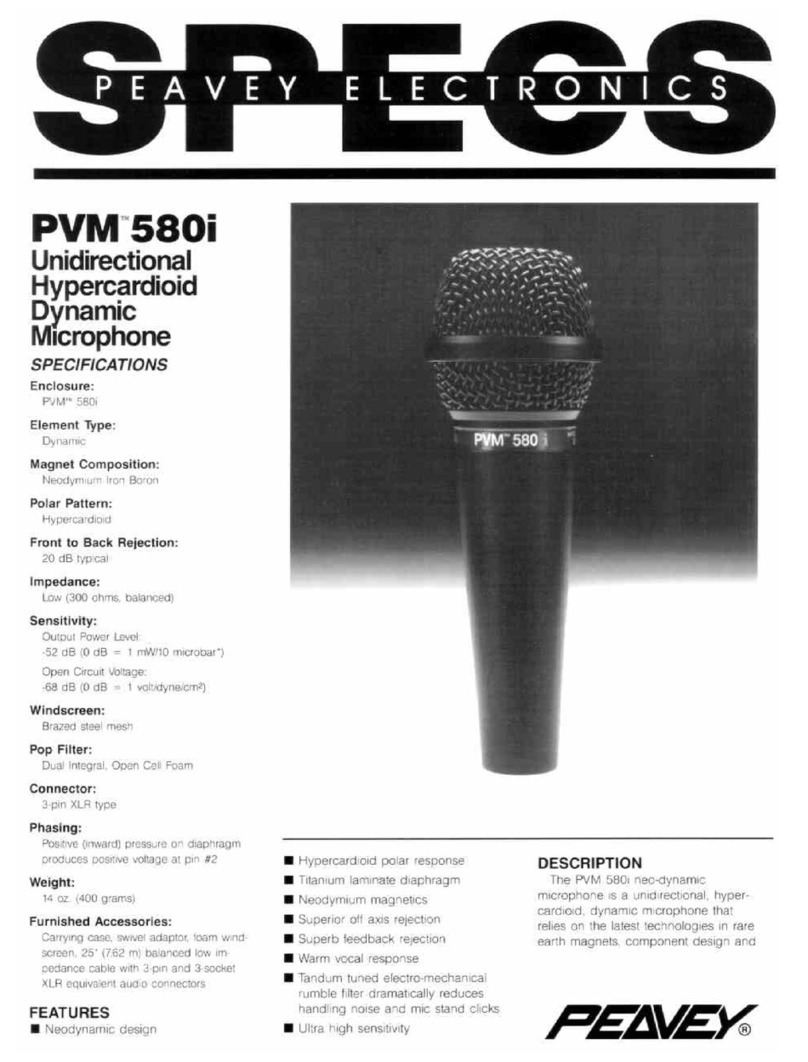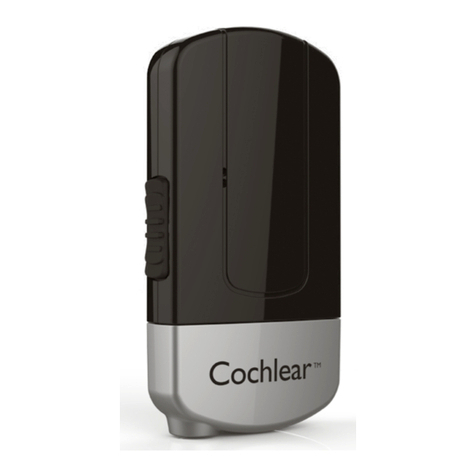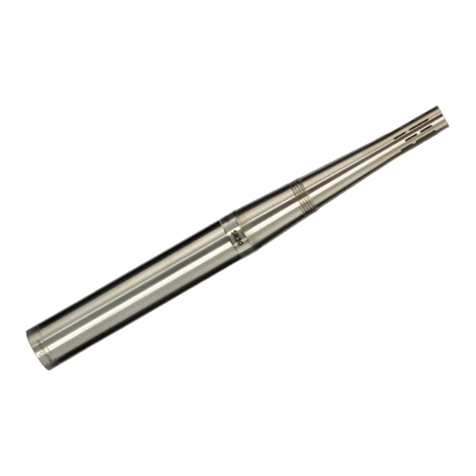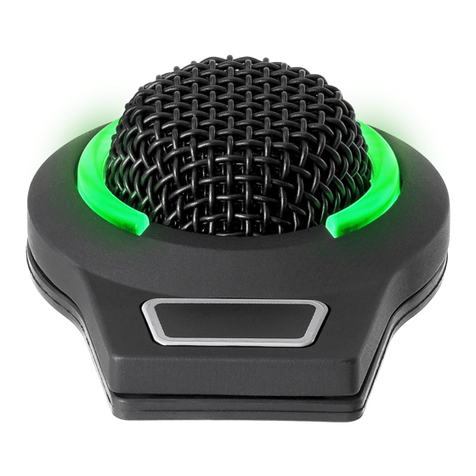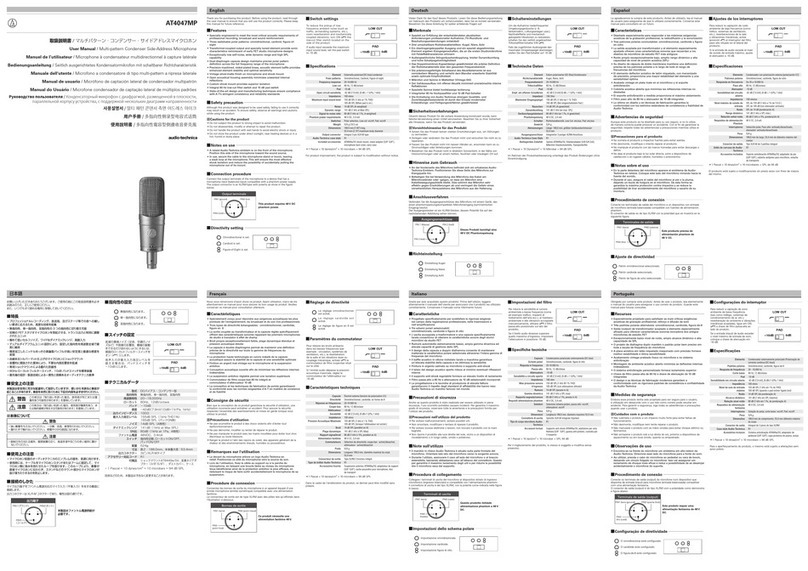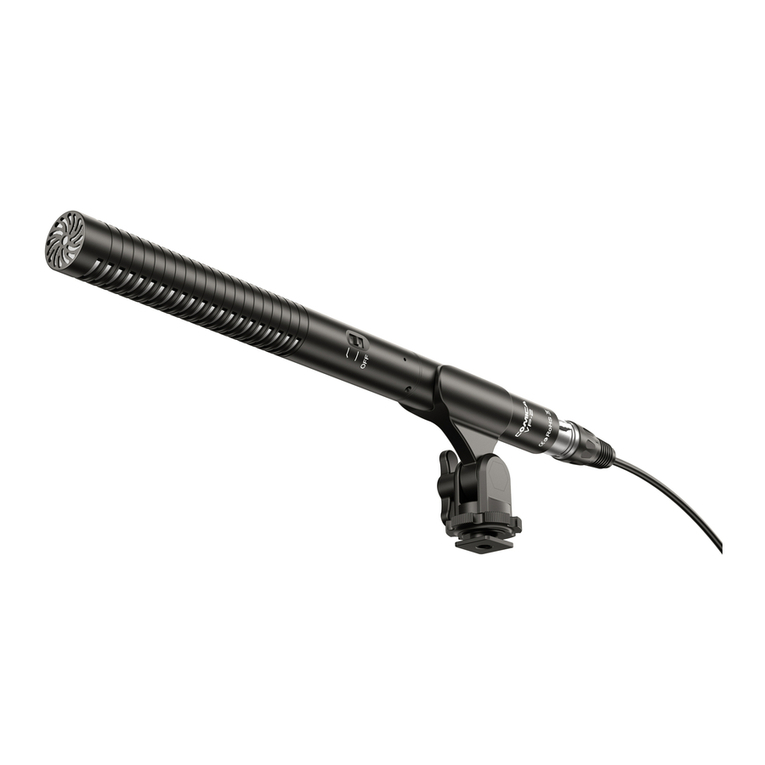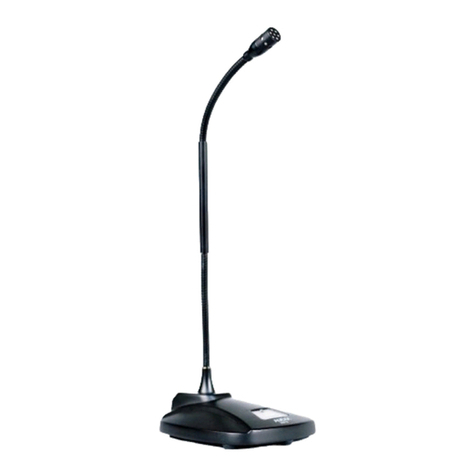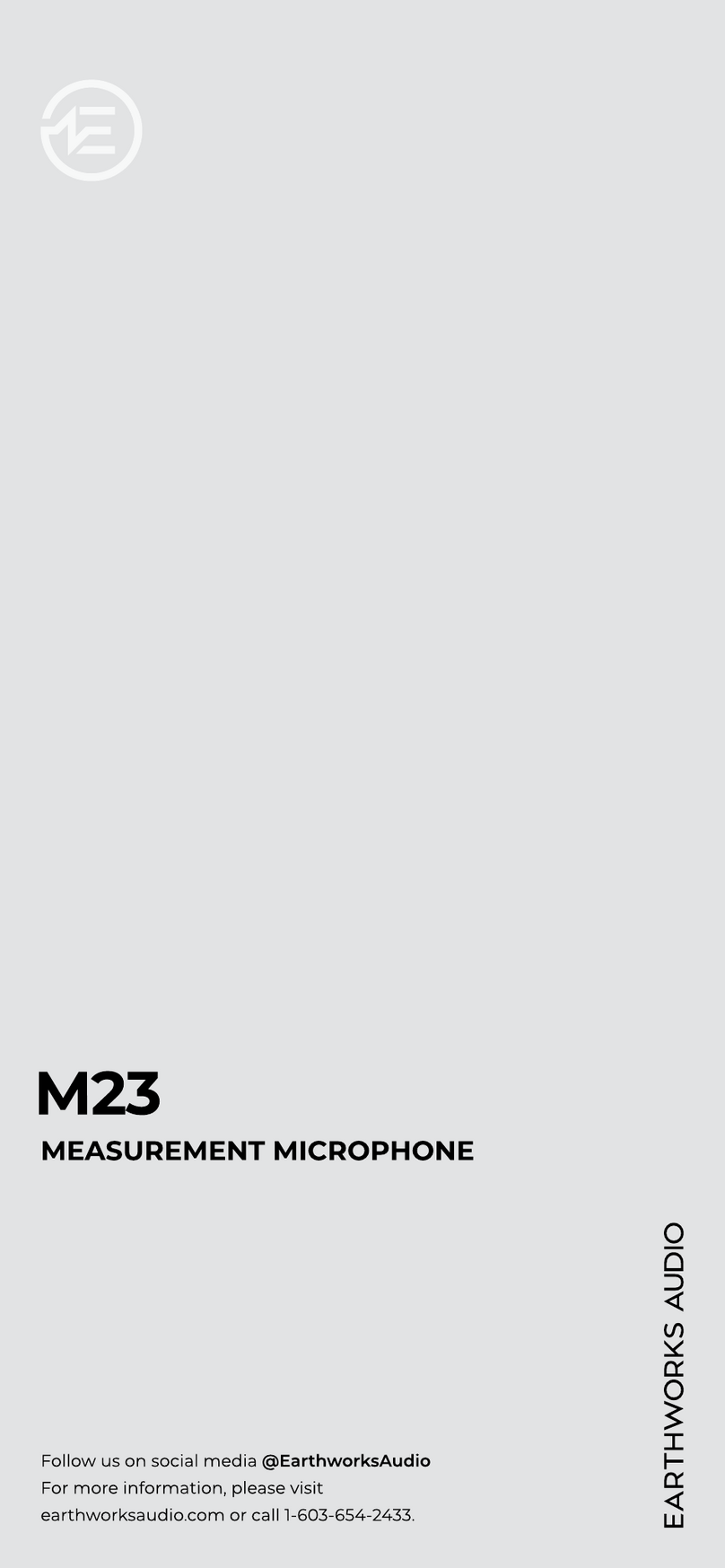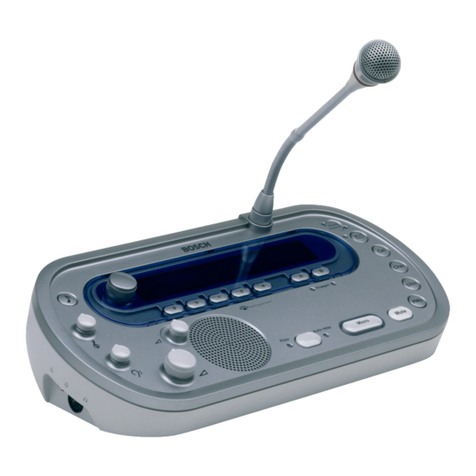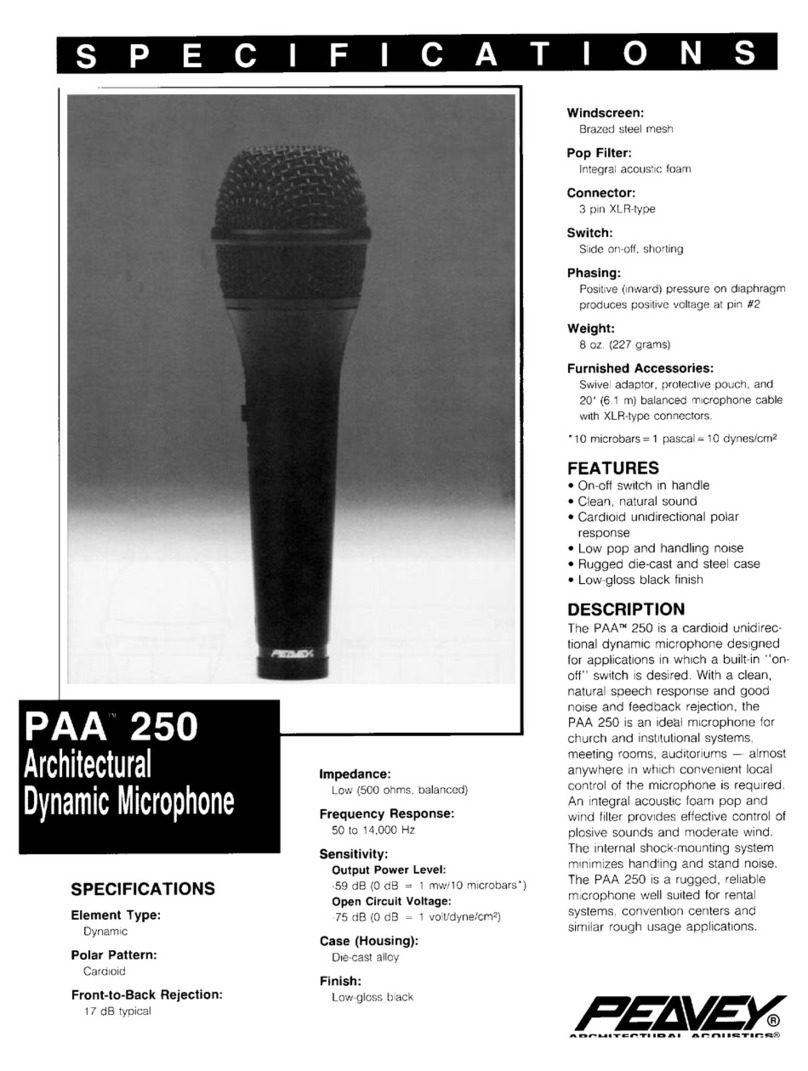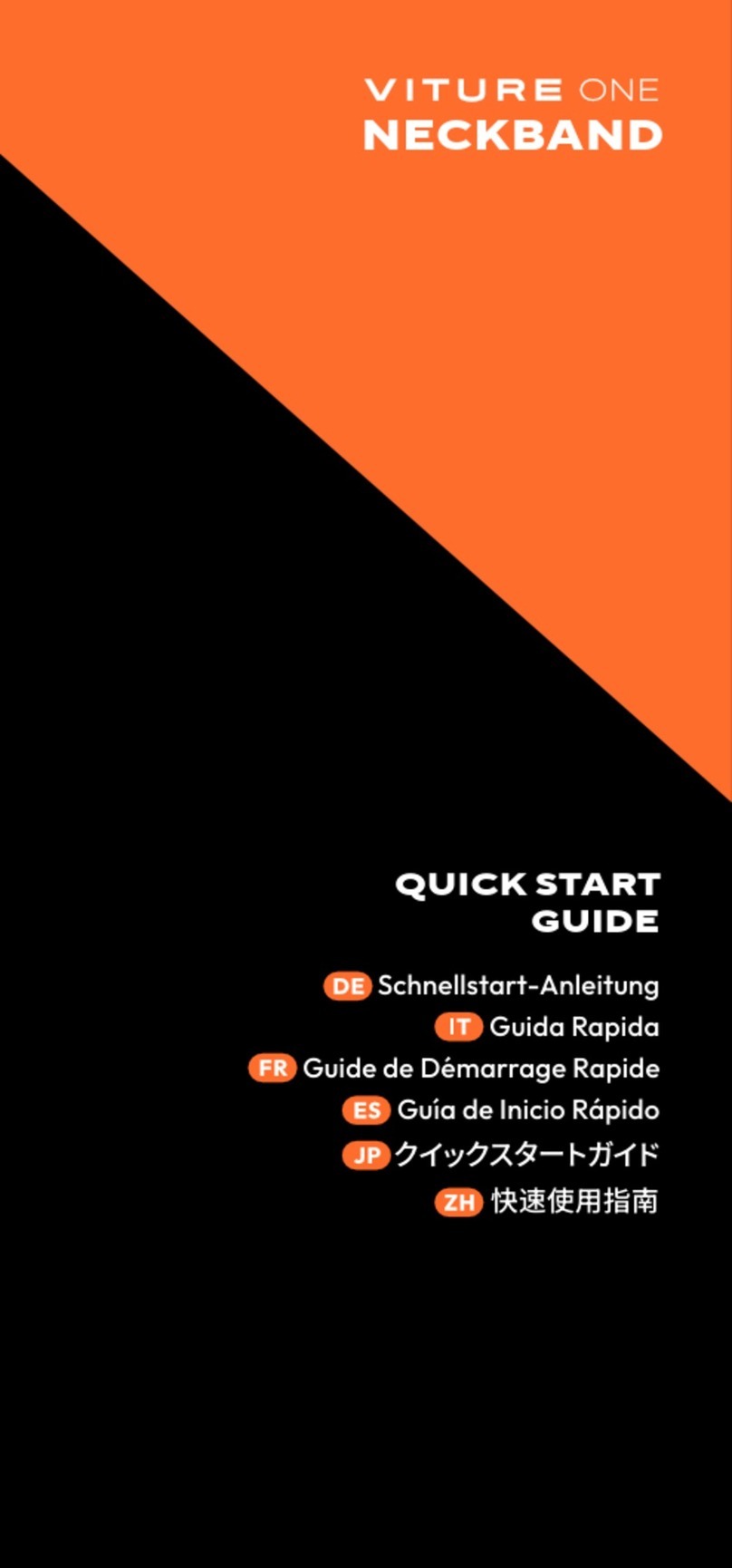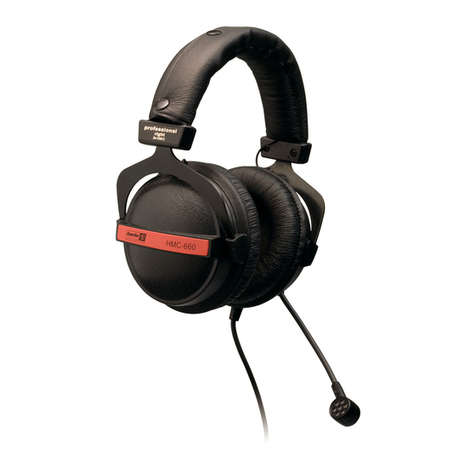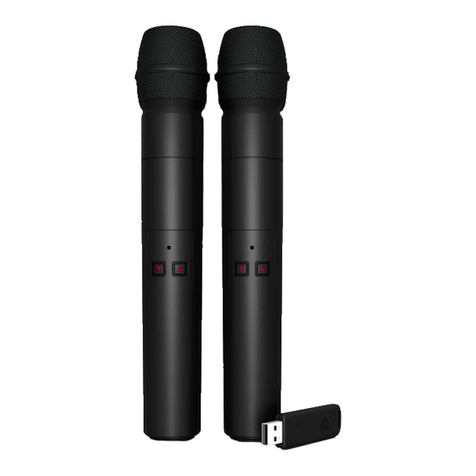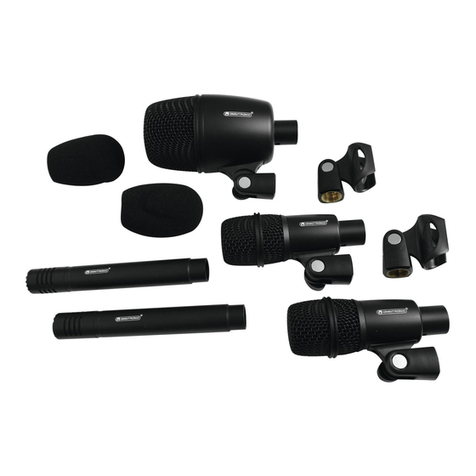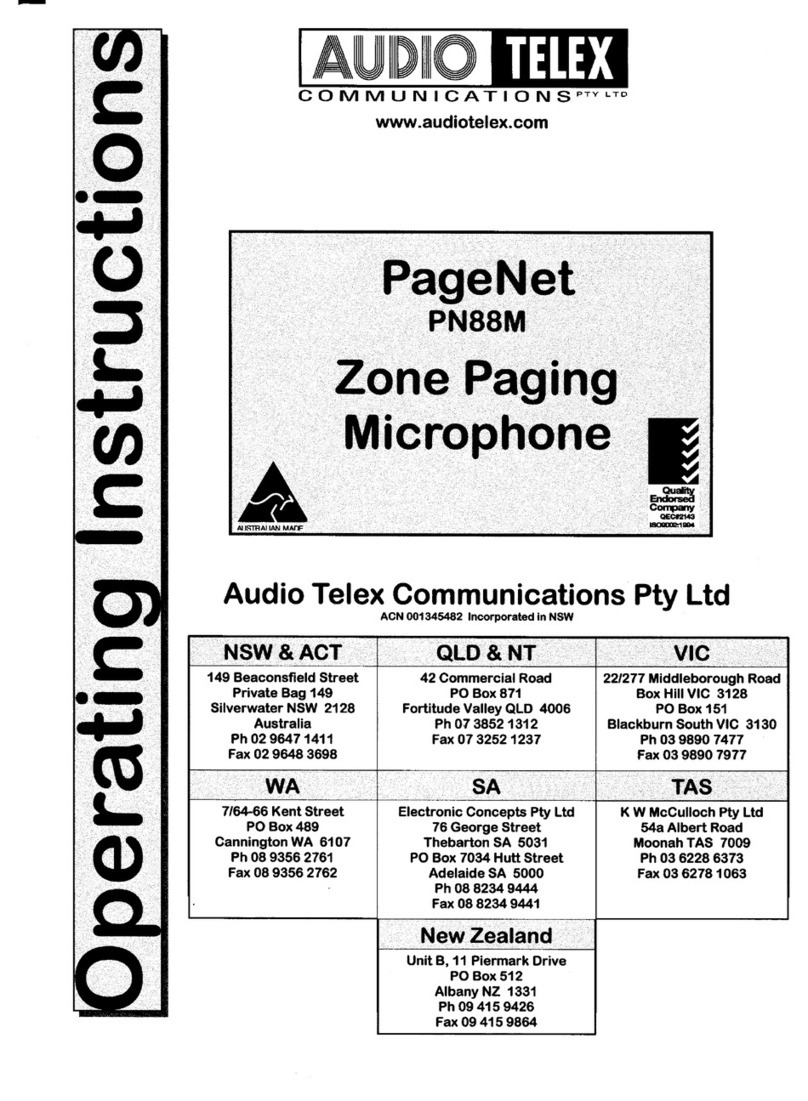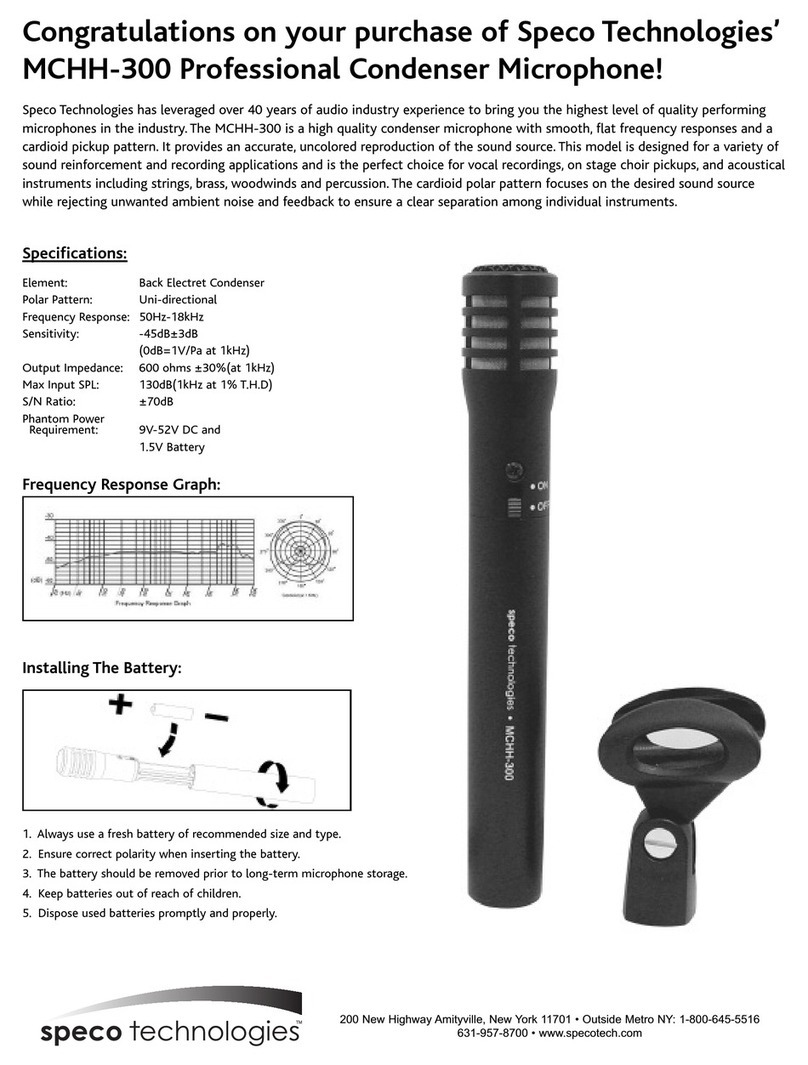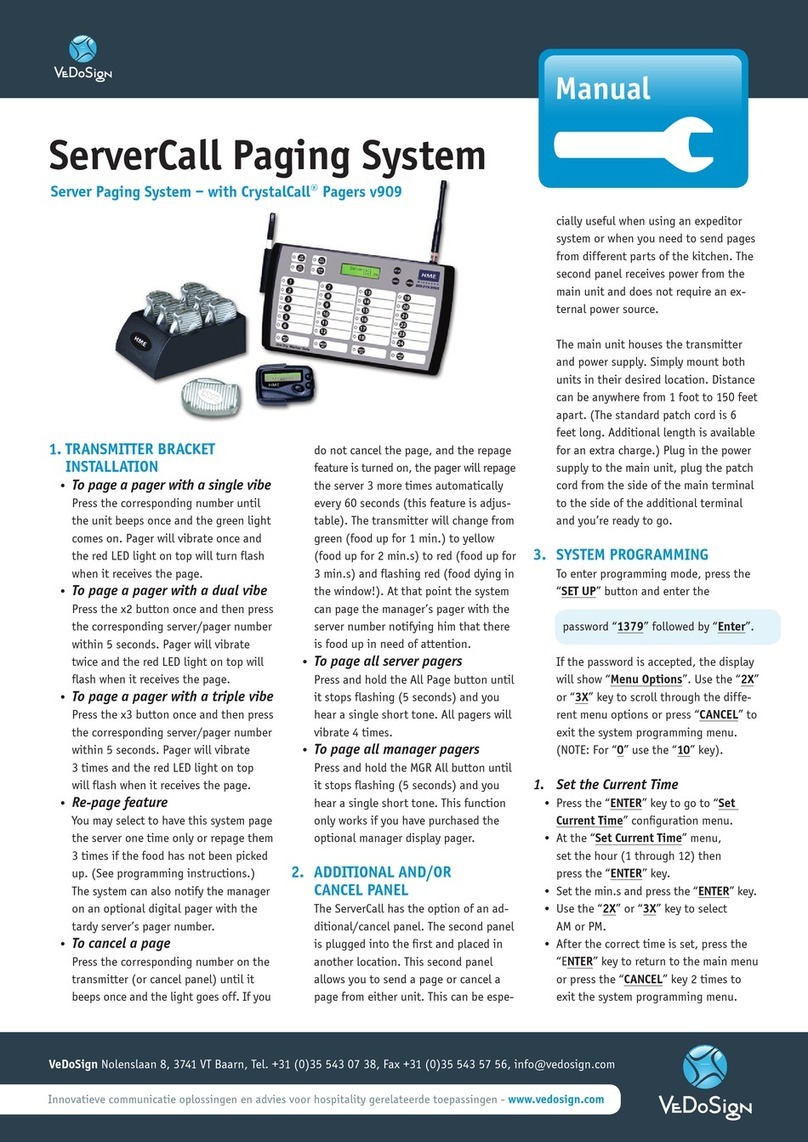• Designed for suspension over
choirs, instrumental groups
and theater stages
• Wall/ceiling plate power module
permits permanent installation
in standard metal U.S. single
gang electrical box
• UniLine™polar pattern
provides narrow 90°
acceptance angle
• Superior off-axis rejection for
maximum gain before
feedback
• UniGuard™RFI-shielding
technology offers outstanding
rejection of radio frequency
interference (RFI)
• UniSteep®filter provides a
steep low-frequency
attenuation to improve sound
pickup without affecting voice
quality
• Accepts interchangeable elements to permit angle of acceptance
from 90° to 360°
• Low-profile design with low-reflectance finish for minimum
visibility
• Available in two colors: black (U853PMU) and white (U853PMWU)
The U853PMU requires 11V to 52V phantom power for operation.
A uniform 90° angle of acceptance provides well-balanced audio
pickup over a narrow area. The microphone should be located
forward of the front-most source, above the rear-most source, and
“aimed” between them (Fig.1). Increasing the height of the mic
above the sources will tend to equalize sound levels between them,
but may also increase background/reverberant sound pickup. When
possible, the distance from the mic to the rear-most source should
be no more than twice the distance to the front source, to maintain
front-to-rear balance (Fig. 1).
Width of pickup is approximately 1.5 times the distance to the
closest performer. If additional mics are needed for wide sources,
they should be positioned apart laterally at least 1.5 times the
distance to the front source, to avoid phase cancellation (Fig. 2).
To orient the microphone in the proper direction, twist the housing
slightly in its wire holder. (Clockwise rotation moves the microphone
to the right; counterclockwise rotation moves it to the left.)
The wall/ceiling plate power module comes supplied with a TB3M-
type connector in place. Plug the microphone cable's TA3F
connector into the wall/ceiling plate power module's TB3M-type
connector. The power module features a white-finished standard
electrical cover plate for easy, secure installation.
The AT8534 wall/ceiling plate power module is designed to be
mounted in a standard metal U.S. single-gang electrical box. For
safety and best performance, use the electrical box only for the
AT8534; do not include any AC power conductors. (Also route the
mic cable as far away from AC power cables as possible.)
NOTE: Audio-Technica has developed a special RFI-shielding
mechanism, which is an integral part of the connectors in the
UniPoint line. If you remove or replace the connector, you may
adversely affect the unit's RFI immunity.
However, if you must change cable length, replace the TB3M-type
connector on the wall/ceiling plate power module with the provided
strain relief. Feed the small cable from the mic through the strain
relief on the power module plate. Tie a loose knot in the cable at the
desired length and push it down gently into the recess in the back of
the strain relief to secure the microphone. Cut excess cable, strip the
mic cable wires (Fig. 3) and attach them to their respective input
terminals (Fig. 4).
Screw-terminal output connections of the AT8534 are the same as
those of an XLR-type plug: shield to Terminal 1, balanced single and
phantom power to Terminals 2 and 3. Output is phased so that
positive acoustic pressure produces positive voltage at Terminal 2, in
accordance with industry convention. Do not connect the output
cable shield to the box. Double-check to make certain that all input
and output leads have no bare wires or loose strands that could
touch each other, the circuit board or the electrical box. Then attach
the power module plate to the electrical box.
An integral 80 Hz high-pass UniSteep®filter provides easy switching
from a flat frequency response to a low-end roll-off (switch located
on circuit board). The roll-off position reduces the pickup of low-
frequency ambient noise (such as traffic, air-handling systems, etc.),
room reverberation and mechanically coupled vibrations.
A 10 dB gain switch is provided for situations that demand extra
sensitive pickup. The +10 position increases the microphone's
overall output by 10 dB.
Avoid leaving the microphone in the open sun or in areas where
temperatures exceed 110° F (43° C) for extended periods. Extremely
high humidity should also be avoided.
Audio-Technica U.S., Inc., 1221 Commerce Drive, Stow, Ohio 44224
Audio-Technica Limited, Old Lane, Leeds LS11 8AG England
www.audio-technica.com
P51810 ©2005 Audio-Technica U.S., Inc. Printed in U.S.A.
U853PMU/U853PMWU
U853PMU/U853PMWU SPECIFICATIONS†
ELEMENT Fixed-charge back plate
permanently polarized
condenser
POLAR PATTERN Line Cardioid
FREQUENCY RESPONSE 30-20,000 Hz
LOW FREQUENCY ROLL-OFF 80 Hz, 18 dB/octave
OPEN CIRCUIT SENSITIVITY –35 dB (17.7 mV) re 1V at 1 Pa*
IMPEDANCE 200 ohms
MAXIMUM INPUT SOUND LEVEL 124 dB SPL, 1 kHz at 1% T.H.D.
DYNAMIC RANGE (typical) 102 dB, 1 kHz at Max SPL
SIGNAL-TO-NOISE RATIO172 dB, 1 kHz at 1 Pa*
PHANTOM POWER REQUIREMENTS 11-52V DC, 4 mA typical
SWITCHES Flat, roll-off;
0 dB/+10 dB gain setting
WEIGHT
MICROPHONE 1.1 oz (30 g)
POWER MODULE 3.4 oz (97 g)
DIMENSIONS
MICROPHONE 6.14" (156.0 mm) long,
0.48" (12.2 mm) diameter
POWER MODULE 2.80" (71.0 mm) W x
4.55" (115.5 mm) H x
1.42" (36.0 mm) D
OUTPUT CONNECTOR Screw terminals
(power module)
CABLE 25' (7.6 m) long (permanently
attached to microphone),
0.13" (3.2 mm) diameter,
2-conductor, shielded cable
with TA3F-type connector
OPTIONAL INTERCHANGEABLE UE-C cardioid (120°);
ELEMENTS UE-H hypercardioid (100°);
UE-O omnidirectional (360°)
ACCESSORIES FURNISHED
U853PMU AT8154 two-stage foam
windscreen; AT8451 steel hanger
U853PMWU AT8154(WH) two-stage foam
windscreen; AT8451(WH) steel
hanger
BOTH AT8534 wall/ceiling plate power
module; AT8438 5/8"-27 stand
adapter
†In the interest of standards development, A.T.U.S. offers full details on its test
methods to other industry professionals on request.
*1 Pascal = 10 dynes/cm2= 10 microbars = 94 dB SPL
1 Typical, A-weighted, using Audio Precision System One.
Specifications are subject to change without notice.
UNILINE™CONDENSER
HANGING MICROPHONES
• Conçus pour être suspendus
au-dessus des chœurs, des
groupes instrumentaux et des
scènes de théâtre
• Module d'alimentation sur
plaque pour mur ou plafond
autorisant une installation
permanente sur les coffrets
électriques standard US
métalliques à commande
unique
• Directivité UniLine™fournissant
un angle d’acceptance étroit
de 90°
• Rejet hors axe supérieur pour
un gain avant accrochage
maximal
• Excellent rejet des
interférences rf
• Filtre UniSteep®pour une forte
atténuation des basses
fréquences ; améliore la prise
de son sans affecter la qualité
de la voix
• Peut recevoir des capsules interchangeables, ce qui permet
d’avoir un angle d’acceptance allant de 90° à 360°
• Design discret avec une finition minimisant les reflets pour une
visibilité minimale
• Disponible dans deux couleurs : noir (U853PMU) ou blanc
(U853PMWU)
Le U853PMU fonctionne sur alimentation fantôme de 11V à 52V.
La prise de son est bien équilibrée sur une zone étroite grâce à un
angle d’acceptance uniforme de 90°. Le microphone doit être placé
en avant de la source la plus en avant, et au-dessus de la source la
plus en arrière, et doit être dirigé vers un point situé entre ces deux
sources (Fig. 1). Plus on élève le micro au-dessus des sources, plus
on égalise les niveaux acoustiques entre l’avant et l’arrière ;
cependant, les bruits de fond et de réverbération risquent d’être
davantage perceptibles. Pour préserver un équilibre entre la prise de
son avant et arrière, la distance entre le micro et la source sonore la
plus en arrière ne doit pas excéder le double de la distance qui
sépare le micro de la source la plus en avant (Fig. 1).
La largeur de la prise de son est égale à environ 1,5 fois la distance
qui sépare le micro de l’interprète le plus proche. Si vous avez
besoin de rajouter des micros pour les sources “larges”, les micros
doivent être placés sur une même ligne, à une distance les uns des
autres d’au moins 1,5 fois la distance qui les séparent de la source
la plus en avant, pour éviter une annulation de la phase (Fig. 2).
Pour orienter le microphone dans la bonne direction, tournez
légèrement le corps du microphone dans son support métallique
(une rotation dans le sens des aiguilles d’une montre pour l’orienter
vers la droite, dans le sens inverse des aiguilles d’une montre pour
l’orienter vers la gauche).
Le module d'alimentation sur plaque pour mur ou plafond est livré
fourni avec un connecteur de type TB3M installé. Branchez le
connecteur TA3F de câble de microphone dans le connecteur
de type TB3M de module d'alimentation sur plaque pour mur
ou plafond. Le module d’alimentation présente une plaque de
recouvrement électrique standard à finition blanche pour une
installation facile et en toute sécurité.
Le module d’alimentation plaque pour les murs ou le plafond AT8534
est conçu pour être installé dans un boîtier électrique simple
standard. Pour des raisons de sécurité et pour obtenir des
performances optimales, utilisez le boîtier électrique uniquement
pour le AT8534 ; ne pas inclure de conducteurs électriques AC
(veillez également à acheminer le câble du micro aussi loin que
possible de fils d’alimentation AC).
REMARQUE : Audio-Technica a développé un dispositif spécial
d'écran RFI faisant intégralement partie des connecteurs dans la
ligne UniPoint. Si vous retirez ou replacez le connecteur, vous
pouvez affecter l'immunité vis-à-vis du brouillage radioélectrique.
Cependant, si vous devez modifier la longueur de câble, remplacez
le connecteur de type TB3M sur le module d'alimentation sur plaque
pour mur ou plafond par la réduction de tension fournie. Faites
passer le petit câble du micro à travers le protecteur de cordon sur la
plaque du module d’alimentation. Faites un nœud assez lâche dans
le câble à la longueur désirée et faites le passer doucement dans le
trou à l’arrière du protecteur de cordon pour bien attacher le
microphone. Coupez le câble en trop, séparez les fils du câble du
micro (Fig. 3) et attachez-les à leur borne à vis respective (Fig. 4).
Les connecteurs de sortie sous forme de bornes à vis de l’AT8534
sont les même que ceux d’une prise de type XLR : blindage à la
borne 1, symétrique simple, et alimentation fantôme aux bornes 2 et
3. La phase à la sortie est telle que la pression acoustique positive
engendre une tension positive à la borne 2, conformément aux
standards de l’industrie. Ne pas connecter le blindage du câble
de sortie au boîtier. Vérifiez bien qu’il n’y ait pas, au niveau des
entrées et sorties, de fils dénudés ou laissés libres qui pourraient se
toucher entre eux, ou toucher la carte de circuit imprimé ou le boîtier
électrique. Puis fixez la plaque du module d’alimentation au boîtier
électrique.
Un filtre passe-haut 80 Hz intégré UniSteep®permet de passer
facilement de la réponse en fréquences plate à l’atténuation des
graves (bouton situé sur la carte de circuit imprimé). La position
passe-haut sert à réduire la sensibilité aux bruits ambiants de basse
fréquence (dus au trafic, aux installations de ventilation, etc.), à
la réverbération de la pièce et aux vibrations couplées
mécaniquement.
Un interrupteur de gain 10 dB est fourni pour des situations exigeant
une sensibilité extrême. La position +10 augmente la sortie intégrale
de microphone de 10 dB.
Evitez de laisser le microphone en plein soleil ou dans des endroits
où la température est supérieure à 43°C (110°F) pendant une durée
prolongée. Une trop forte humidité doit également être évitée.
U853PMU/ U853PMWU CARACTÉRISTIQUES TECHNIQUES†
TYPE Condensateur polarisé en
permanence avec plaque fixe à
charge fixe
DIRECTIVITÉ Cardioïde-ligne
RÉPONSE EN FRÉQUENCE 30-20 000 Hz
ATTÉNUATION DES GRAVES 80 Hz, 18 dB/octave
NIVEAU DE SORTIE –35 dB (17,7 mV) réf 1V/Pa*
IMPÉDANCE 200 ohms
NIVEAU DE PRESSION 124 dB SPL, 1 kHz à 1% T.H.D
ACOUSTIQUE MAXIMAL
DYNAMIQUE (typique) 102 dB, 1 kHz à SPL max.
RAPPORT SIGNAL/BRUIT172 dB, 1 kHz/Pa*
ALIMENTATION FANTÔME 11-52V CC, 4 mA typiques
COMMUTATEURS Plat, atténuation; 0 dB/+10 dB
POIDS
MICROPHONE 30 g (1,1 oz)
MODULE D’ALIMENTATION 97 g (3,4 oz)
DIMENSIONS
MICROPHONE Longueur 156,0 mm (6,14 po),
diamètre 12,2 mm (0,48 po)
MODULE D’ALIMENTATION Hauteur 71,0 mm (2,80 po) x
largeur 115,5 mm (4,55 po) x
profondeur 36,0 mm (1,42 po)
CONNECTEUR DE SORTIE Bornes à vis
(module d’alimentation)
CÂBLE Câble blindé à 2 conducteurs, de
3,2 mm de diamètre (0,13 po) et
7,6 m de long (25,0 pi) (solidaire
du microphone), avec connecteur
de sortie TA3F
CAPSULES INTERCHANGEABLES UE-C cardioïde (120°);
EN OPTION UE-H hypercardioïde (100°);
UE-O omnidirectionnel (360°)
ACCESSOIRES FOURNIS
U853PMU AT8154 bonnette anti-vent en
mousse double épaisseur;
AT8451 suspension en acier
U853PMWU AT8154(WH) bonnette anti-vent
en mousse double épaisseur;
AT8451(WH) suspension en acier
LES DEUX AT8534 module d’alimentation
plaque pour mur/plafond ; AT8438
adaptateur pour pied 5/8"-27
†Afin de contribuer au développement des normes, A.T.U.S. fournit tout renseignement
sur ses méthodes de test aux professionnels de l’industrie qui en font la demande.
*1 Pascal = 10 dynes/cm2= 10 microbars = 94 dB SPL
1Typique, pondéré en A, mesuré avec l’Audio Precision System One.
Les caractéristiques techniques sont soumises à des changements sans préavis.

